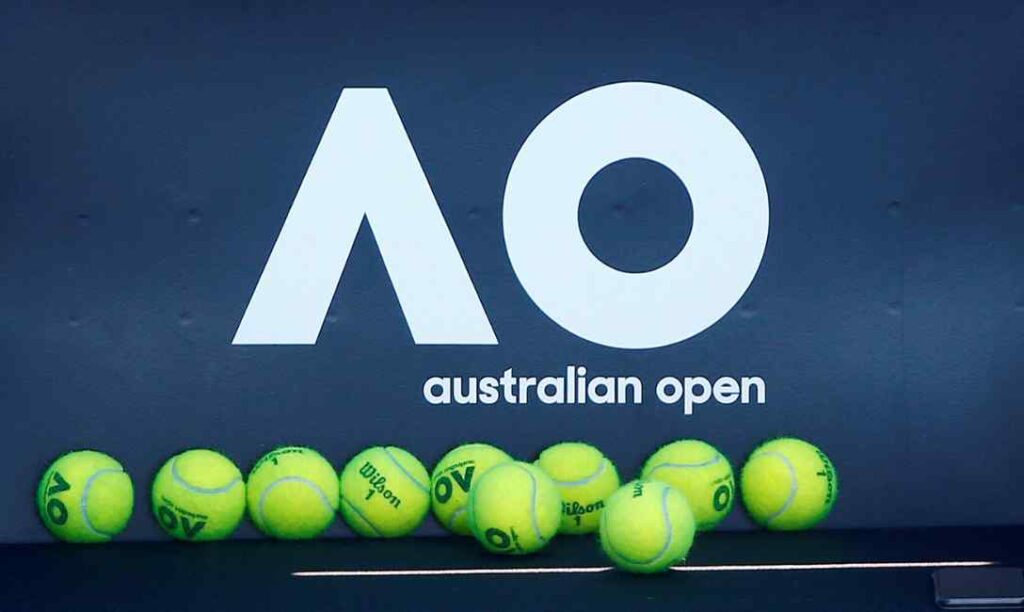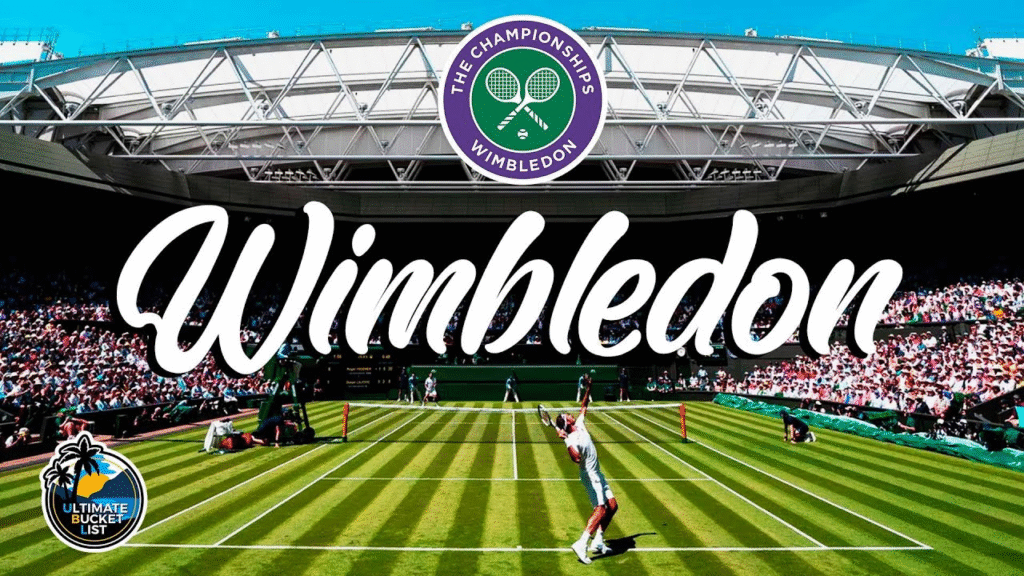Introduction to Tennis
Tennis is more than just a sport—it’s a global passion. Played in over 200 countries, tennis is a game of agility, precision, strategy, and endurance. Whether you play recreationally with friends or follow the intense action of Grand Slam tournaments, tennis offers a unique blend of physical challenge and mental resilience.
In this article, we explore everything you need to know about tennis, from its origins and rules to its benefits, equipment, techniques, and tips for beginners. This comprehensive guide will provide the EEAT-level authority your blog needs while serving value to your audience.
A Brief History of Tennis
The origins of tennis date back to 12th-century France, where monks played a handball game called “jeu de paume” (game of the palm). Over time, rackets were introduced, and the game evolved into the tennis we know today.
Modern tennis took shape in England in the late 19th century. The first Wimbledon Championship was held in 1877. Since then, the sport has expanded across continents, producing legends like Roger Federer, Serena Williams, Rafael Nadal, and Novak Djokovic.
How Tennis is Played: The Basics
Tennis is played either as singles (one-on-one) or doubles (two players per side). The objective is to hit the ball over the net and into the opponent’s court in a way that prevents them from returning it.
Tennis Court Layout
- Baseline: Back line where players serve and rally.
- Service Box: Where the serve must land.
- Net: Divides the two sides; ball must go over it.
- Doubles Alleys: Used only in doubles matches.
Scoring System
The scoring system in tennis is unique:
- 0 points = Love
- 1 point = 15
- 2 points = 30
- 3 points = 40
- 4 points = Game (must win by 2 points)
Players must win six games to win a set, and most matches are best of three or five sets.
Types of Tennis Surfaces
The playing surface dramatically affects how tennis is played:
- Grass Courts (e.g., Wimbledon): Fast-paced, low bounce.
- Clay Courts (e.g., Roland Garros): Slow pace, high bounce.
- Hard Courts (e.g., US Open, Australian Open): Balanced speed and bounce.
- Carpet or Synthetic Courts: Used in indoor settings; very fast.
Each surface demands different strategies, making tennis incredibly versatile.
Tennis Equipment Guide
For new and seasoned players alike, having the right gear is crucial.
Tennis Racket
- Head Size: Larger heads give more power; smaller heads offer more control.
- Grip Size: Essential for comfort and injury prevention.
- String Tension: Affects power and control.
Tennis Balls
- Pressurized or pressureless.
- Yellow felt is standard for visibility.
Apparel
- Lightweight, breathable clothing.
- Tennis shoes with non-marking soles and lateral support.
Accessories
- Wristbands, headbands, caps for sweat control.
- Tennis bags for gear storage.
Health Benefits of Playing Tennis
Tennis is a full-body workout with numerous health benefits:
Physical Benefits
- Cardiovascular Fitness: Running and sprinting improve heart health.
- Muscle Tone: Engages arms, legs, and core.
- Coordination & Agility: Quick footwork and hand-eye coordination.
- Flexibility & Balance: Required for every shot.
Mental Benefits
- Stress Relief: Physical exertion releases endorphins.
- Strategic Thinking: Constant decision-making sharpens the mind.
- Confidence & Focus: Success on the court builds mental strength.
According to the Mayo Clinic, regular tennis play can reduce the risk of heart disease and improve cognitive function.
Tips for Beginners in Tennis
Starting tennis can seem intimidating, but with the right approach, it’s a rewarding journey.
1. Get Proper Coaching
A certified coach can help you learn correct techniques from the beginning—grip, stance, footwork, and swings.
2. Start with the Right Equipment
Avoid using professional-level rackets immediately. Choose a lightweight racket with a large head size for easier control.
3. Focus on the Basics
Mastering the forehand, backhand, serve, and volley is essential. Don’t rush into advanced techniques.
4. Build Physical Endurance
Warm up before every game and maintain overall fitness with cardio and strength training.
5. Practice Consistently
Consistency is key in tennis. Hitting 100 balls a day can drastically improve your technique over time.
Professional Tennis and Grand Slam Tournaments
Professional tennis is governed globally by two primary organizations: the ATP (Association of Tennis Professionals) for men and the WTA (Women’s Tennis Association) for women. These bodies organize a range of tournaments throughout the year, culminating in the prestigious Grand Slam events.
ATP and WTA Tours
- ATP Tour (Men): Includes ATP 250, ATP 500, ATP Masters 1000, and the year-end ATP Finals. Rankings are based on a rolling 52-week system.
- WTA Tour (Women): Features WTA 250, WTA 500, WTA 1000 events, and the WTA Finals. Like the ATP, points are awarded based on performance and consistency.
Both tours create a pathway for players to rise through the rankings, gain sponsorships, and earn a place among the top-seeded competitors in the world.
The Four Grand Slam Tournaments
Known as the majors, the Grand Slam tournaments represent the pinnacle of tennis excellence. Winning one is considered the highest achievement in the sport, and winning all four in a single year is called a Calendar Grand Slam—an extremely rare feat.
1. Australian Open

- When: January
- Surface: Hard court (Plexicushion)
- Location: Melbourne Park, Melbourne, Australia
- Founded: 1905
- Unique Feature: First major of the calendar year and known for its high temperatures.
- Notable Champions: Novak Djokovic (10 titles), Margaret Court (11 titles)
The Australian Open is often dubbed the “Happy Slam” for its festive atmosphere and fan-friendly environment. It has embraced innovation with retractable roofs on its main courts and the use of electronic line calling.
2. French Open (Roland Garros)

- When: Late May to Early June
- Surface: Red clay
- Location: Stade Roland Garros, Paris, France
- Founded: 1891
- Unique Feature: The only Grand Slam played on clay, which makes points longer and more physically demanding.
- Notable Champions: Rafael Nadal (14 titles), Chris Evert (7 titles)
The French Open is a test of stamina, skill, and strategy. Clay surfaces slow down the ball and produce high bounces, making it ideal for players who excel in endurance and topspin play.
3. Wimbledon

- When: Late June to Early July
- Surface: Grass
- Location: All England Club, London, UK
- Founded: 1877 (oldest tennis tournament)
- Unique Feature: Maintains traditional values—white attire, no sponsor ads on courts, and royal patronage.
- Notable Champions: Roger Federer (8 titles), Serena Williams (7 titles)
Wimbledon is the most prestigious tournament in the world. Its long-standing traditions and iconic Centre Court make it a dream stage for any player.
4. US Open

- When: Late August to Early September
- Surface: Hard court (DecoTurf)
- Location: USTA Billie Jean King National Center, New York, USA
- Founded: 1881
- Unique Feature: The loudest and most energetic Slam, with night matches and a passionate American crowd.
- Notable Champions: Jimmy Connors, Pete Sampras, Serena Williams
The US Open leads in innovation, being the first to introduce tiebreaks in deciding sets and fully automated line calls. It offers the highest prize money among the Grand Slams.
Tournament Format
Each Grand Slam follows a knockout format and consists of five primary events:
- Men’s Singles (Best of 5 sets)
- Women’s Singles (Best of 3 sets)
- Men’s Doubles
- Women’s Doubles
- Mixed Doubles
Additionally, wheelchair, junior, and legends events add diversity and inclusiveness to the tournaments.
Points and Prize Money
| Tournament | Winner’s Points (Singles) | Approx. Prize Money (2025 est.) |
| Australian Open | 2000 points | $2.1 million USD |
| French Open | 2000 points | $2.3 million USD |
| Wimbledon | 2000 points | $2.6 million USD |
| US Open | 2000 points | $3.0 million USD |
Winning a Grand Slam not only earns players a significant financial reward but also boosts their rankings and legacy. Many top sponsors focus on Grand Slam performances when choosing endorsements.
Legendary Tennis Players
Men
- Roger Federer: Known for elegance and grace on court.
- Rafael Nadal: Dominant on clay, incredible endurance.
- Novak Djokovic: Versatile, record-holder for Grand Slam wins.
Women
- Serena Williams: Powerhouse with 23 Grand Slam singles titles.
- Steffi Graf: Known for her Golden Slam in 1988.
- Martina Navratilova: Exceptional career across singles and doubles.
These players have redefined with their contributions and inspired millions to pick up a racket.
Tennis for Kids: Starting Young
Tennis is a fantastic sport for children. It improves their motor skills, encourages discipline, and boosts confidence. Programs like USTA’s Net Generation and LTA Youth in the UK make accessible to children with smaller courts and lower-pressure balls.
Advanced Techniques in
Once you master the basics, consider learning advanced strategies:
Topspin and Slice
Add spin to control the ball’s bounce and speed.
Serve Variations
Learn flat, kick, and slice serves to keep your opponent guessing.
Footwork Drills
Work on lateral movement, split steps, and recovery.
Mental Toughness
Visualization, breathing techniques, and focus are key to competing at higher levels.
The Role of Technology in Tennis
Modern tennis uses cutting-edge technology for training and entertainment.
- Hawk-Eye Technology: Used for line calls.
- Wearables: Track fitness and swing analytics.
- Smart Rackets: Analyze stroke power and angles.
- AI Match Analysis: Used by coaches to devise strategies.
These advancements enhance both player performance and viewer engagement.
Tennis and Social Connection
Tennis isn’t just for professionals. It’s a community activity that fosters friendships and teamwork. Playing tennis at a local club or in public parks can lead to lifelong connections and social fulfillment.
Common Mistakes New Players Make
- Incorrect Grip: Leads to loss of control and power.
- Poor Footwork: Causes late shots and injuries.
- Overhitting: Precision matters more than force.
- Skipping Warm-Ups: Increases injury risk.
- Neglecting Strategy: Tennis is a mental game too.
Fixing these early helps in building a strong foundation.
Why Tennis is One of the Top Sports in the World
With over 1 billion fans globally, tennis stands alongside soccer, cricket, and basketball in popularity. Its global appeal is fueled by:
- Accessibility across age groups.
- Equal participation by men and women.
- Thrilling individual rivalries.
- Year-round international events.
From neighborhood courts to grand stadiums, tennis inspires passion, discipline, and joy.
Conclusion: Why You Should Start Playing Tennis Today
Tennis offers a rare combination of fitness, fun, and focus. Whether you’re looking to get active, sharpen your mind, or challenge yourself, tennis is the perfect sport.
It’s never too late to start playing tennis. All you need is a racket, a ball, and the willingness to learn. Join a local club, find a coach, or simply rally with a friend. The court awaits!




